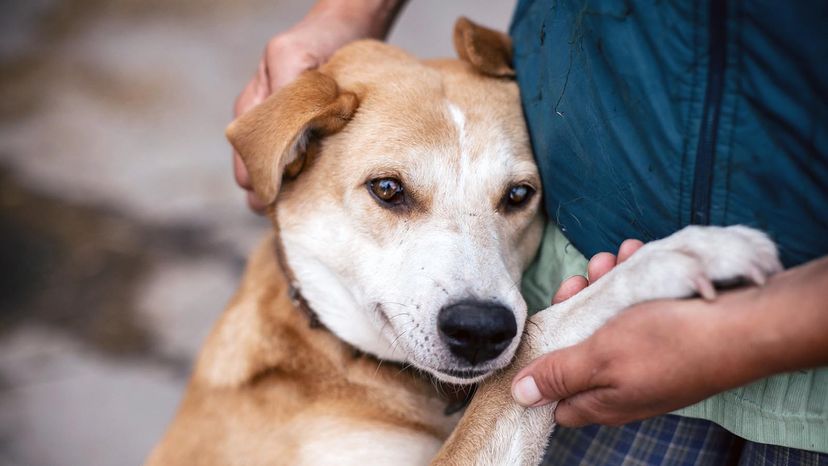
It's easy to know when your dog loves seeing you (or the treats you're offering) because he wags his tail, jumps with joy and follows you around endlessly. But what other emotions does your dog display to show his love for you?
Well according to new research from Japanese scientists at Azabu University, there's another level to the bond dogs have with humans and how they show it: tears of joy.
Advertisement
A first-of-its-kind study published in the Aug. 22, 2022, issue of Current Biology found that dogs do, in fact, shed tears. The idea to test whether it happened came to Takefumi Kikusui, a professor at the Laboratory of Human-Animal Interaction and Reciprocity at Azabu University, several years ago after his standard poodle had puppies. As he watched the mother nurse her litter, Kikusui noticed that her eyes teared up.
Kikusui said it made him consider the effects of oxytocin — the feel-good hormone — on dogs. Could it influence their emotions as it does humans?
To test the hypothesis, Kikusui and his colleagues created an experiment in which 18 dogs were separated from their owners for about five hours — and then reunited. The researchers measured the dogs' tear volume before and after the reunions using the Schirmer tear test. It uses paper strips placed inside the eyes to measure tear output. They also staged similar meetings with people the dogs did not know.
The results were conclusive: When the dogs were reunified with their owners, their tear volume increased, but not so with strangers. To understand the role oxytocin plays in canine tear production, the team then added oxytocin eye drops. As they suspected, the oxytocin increased the amount of tears the dogs produced.
"We found that dogs shed tears associated with positive emotions," Kikusui said in a press statement. "We also made the discovery of oxytocin as a possible mechanism underlying it."
Oxytocin is a hormone "produced by the hypothalamus gland and released into the bloodstream by the pituitary gland," according to Harvard Women's Health Watch. It is part-and-parcel of childbirth, stimulating uterine muscles to contract, increasing breastmilk production and encouraging an emotional bond between mother and child.
People, for example, produce oxytocin when they feel "love" for a partner, which in turn encourages more feelings of affection. Could dogs also be susceptible to this type of feedback loop? Turns out, the answer is "yes."
"We had never heard of the discovery that animals shed tears in joyful situations, such as reuniting with their owners," Kikusui said.
But there were more surprises. The study also asked people to rate pictures of dogs, some with artificial tears in their eyes and some without. The dogs with teary eyes received more positive responses, a finding that could indicate that dogs' co-evolution with humans helped them develop emotional states that forge greater human/dog bonds.
Although the study didn't examine whether dogs cry during times of unhappiness or duress, researchers plan to continue to explore the implications of the human/dog bond.
"Dogs have become a partner of humans and we can form bonds," Kikusui said. "In this process, it is possible that the dogs that show teary eyes during interaction with the owner would be cared for by the owner more."
Advertisement


